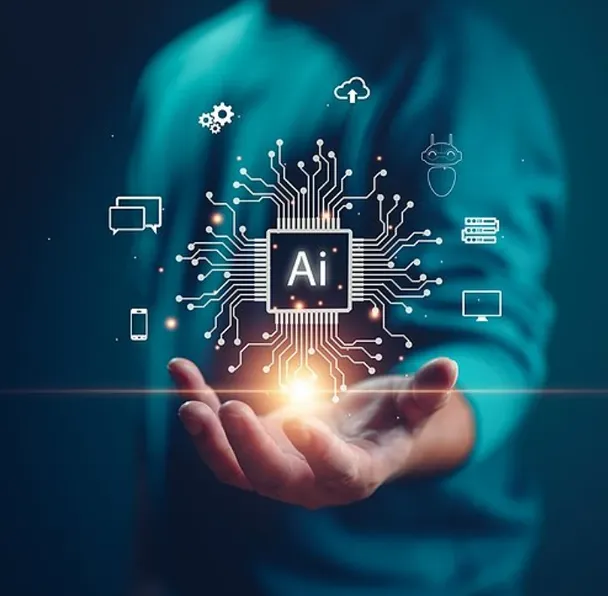Artificial intelligence is no longer just a set of tools we use—it’s becoming an active participant in how work gets done. The transition from AI as a simple assistant to AI as a true collaborator is reshaping organizations, decision-making, and human interaction. For leaders, this creates a pressing challenge: how to integrate AI in a way that strengthens human judgment instead of replacing it.
As organizations adopt AI, the focus shouldn’t just be on productivity gains or cost savings. The real test lies in how leaders design workflows that balance efficiency with trust, creativity, and accountability—the very qualities that make human contributions irreplaceable.
When AI Redefines Accountability
The adoption of AI often raises complex questions about responsibility. Many executives assume that introducing AI will automatically translate into reduced staffing or faster output. However, most roles combine technical skills, human judgment, and emotional intelligence. AI can support these roles, but it cannot fully replicate them.
Consider a story shared on a Gartner podcast about a civil engineering firm. Leadership introduced AI tools to speed up bridge design, expecting improved accuracy and efficiency. Yet, the architects resisted. At first glance, this seemed like resistance to innovation. A closer look revealed the real issue: the architects were legally liable for any design flaws. While the AI offered recommendations, ultimate responsibility still rested with the humans involved. This created a moral and legal dilemma.
The lesson is clear—just because AI can be implemented doesn’t mean it should be. Leaders must understand where accountability resides and ensure that human oversight remains where the stakes are highest. AI should enhance decision-making, not create gaps in responsibility.
When Automation Misses the Point: A Casino’s Misstep
One common mistake organizations make is automating processes without fully understanding them. A Las Vegas casino learned this the hard way.
To modernize service, leadership introduced a feature that allowed guests to order drinks directly from slot machines. On paper, this streamlined ordering and reduced the need for floor staff. In practice, it caused chaos.
Two critical factors were overlooked:
- Guest behavior: Slot players frequently move between machines, especially when they feel unlucky. Orders placed at one machine often couldn’t be delivered because the guest had already moved elsewhere, leaving servers scrambling to find them.
- The human role: Servers weren’t just delivering drinks; they were also monitoring guest behavior, providing hospitality, and ensuring safety by cutting off service to overly intoxicated patrons. These tasks relied on empathy and situational awareness, which technology couldn’t replace.
The failure stemmed from a lack of direct observation. In Japanese business philosophy, this practice is called Gemba—going to the place where work happens to truly understand it. The casino optimized for efficiency but neglected the human dynamics that made the experience successful.
Employees Want Fairness, Not Just AI
A Gartner survey revealed that many employees believe algorithms could provide fairer performance feedback than their managers. At first glance, this might seem like an endorsement of AI, but it actually signals frustration with existing systems.
Research shows that most employees find performance reviews neither fair nor transparent. Automating a flawed process won’t solve the problem. Instead, organizations need to focus on building clarity, consistency, and trust in performance management. AI can play a supporting role by analyzing patterns and summarizing feedback, but humans must remain central to evaluating and developing talent.
Five Leadership Imperatives for the AI Era
- Observe Before You Automate
Before deploying AI, leaders should take time to understand how work is truly done. By spending time with frontline teams, they can uncover hidden complexities and identify where automation adds value versus where human insight is essential.
Action: Make Gemba walks a routine leadership practice to stay connected to the realities of work. - Redesign Workflows, Don’t Just Digitize Them
AI isn’t about plugging new technology into old processes. Leaders must rethink roles and responsibilities.
Action: Form cross-functional teams to audit and redesign workflows so that humans and AI complement each other, rather than compete. - Repair Performance Systems Before Adding AI
AI cannot fix poorly designed performance management. Focus on creating clear expectations, frequent conversations, and bias-free evaluations first.
Action: Use AI to synthesize data, not to make final decisions about human potential. - Develop Ethical and Data Literacy in Leadership
Leaders must understand how AI systems work and the ethical implications of their use.
Action: Update leadership training to include AI literacy, ethical decision-making, and human-AI collaboration skills. - Engage Employees in AI Integration
Employees should have a voice in how AI tools are adopted.
Action: Create channels for open feedback on how AI impacts daily work, and use this input to guide implementation.
Designing With Purpose
The Vegas casino’s failure illustrates what happens when organizations focus on technology while neglecting the human side of work. In the rush to automate, it’s easy to confuse visibility with understanding or speed with progress.
AI’s potential is enormous, but its success depends on how thoughtfully it’s applied. The most successful companies of the future won’t simply have the most advanced AI—they’ll have leaders who understand the deep realities of work, value human judgment, and design systems where technology enhances rather than replaces the human experience.







